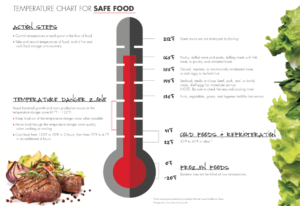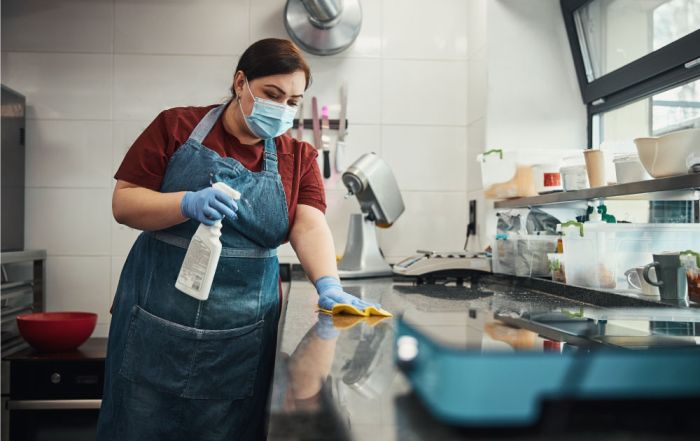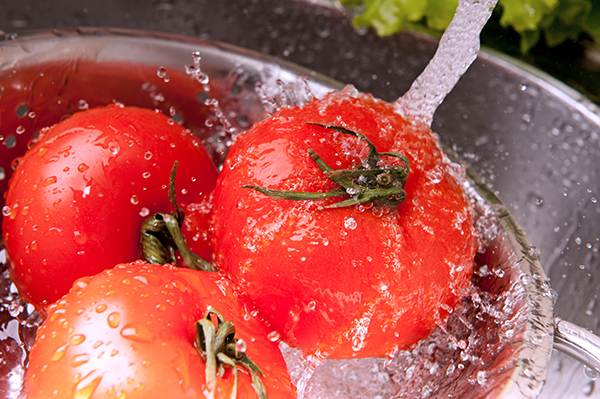SafeBites Time and Temperature Control: Why & When
Hi Everyone – Cathy here. Having written the SafeFood Blog for Iowa State University for over ten years, I am happy to have the opportunity to work with FoodHandler in my retirement. Jeannie and I share with FoodHandler a passion for making sure food served is safe.
You might recall in the June blogs, Jeannie presented the Top 5 reasons why food becomes unsafe, and she discussed controls for two of those in efforts to reduce risk of cross contamination leading to a foodborne illness.
In this month’s blog, the topic of preventing temperature abuse of foods will be covered. This week, the focus is on the “why” and “when” of time and temperature controls. The second blog in July will identify some action steps that can be taken by foodservice employees to control for time and temperature abuse of foods.
Why is time and temperature control for foods so important? For one thing, it contributes to quality of food. Keeping hot foods hot and cold foods cold, and serving food as close as possible to when it was prepared enhances quality. Who wants to eat a dry hamburger, a cool bowl of soup, or wilted lettuce?
In addition to quality, temperature controls that minimize time certain foods are in the temperature danger zone (TDZ) mitigate the risk of bacteria growing to harmful levels. Temperature Controlled for Safety foods, or TCS foods (which were previously known as potentially hazardous foods) have characteristics that are especially conducive to rapid growth of harmful microorganisms. Rapid growth occurs when the food is in the TDZ. The TDZ is that temperature range between refrigeration (below 41° F) and hot holding (135° F or higher). The “super” TDZ is between 70° F and 135° F. It is in this temperature range where reproduction of bacteria takes place at accelerated rates. That is why proper cooling of hot foods is so important. Because of that rapid growth, the longer foods are in the TDZ, the more bacterial cells will be present, thus likely causing an illness to whoever eats the food. It really isn’t complicated!
In operations, strategizing preparation and holding processes to minimize exposure in the TDZ is the goal. (More on the How To’s next time). FoodHandler® recently updated its Temperature Chart for Safe Food. Consider posting this chart in your kitchen to remind staff of the importance of time and temperature in their daily work.
The other question is when should temperature controls be in place? The simple answer is ALL THE TIME! The general rule of thumb is a total of four hours exposure to the TDZ. But keep in mind the clock is ticking when foods are delivered to the loading dock and before placed into storage, when foods are pulled from refrigeration or freezer during preparation, and after menu items are prepared but before service. Newer versions of the Food Code provide guidance on using Time as a Public Health Control (TPHC), which was previously referred to as TILT (Time in Lieu of Temperature).
In a nutshell, TPHC allows for hot or cold food holding without temperature controls (no refrigerated salad bar for instance), as long as foods are discarded at the end of the service period. (If food waste is a concern for your operation, then that is a point to consider in whether or not to adopt TPHC.) TPHC does have some requirements that must be met. One, it must be documented that food was at the proper temperature before pulling from the storage unit AND the food item must be labeled with either the time pulled from temperature controls or the time product is to be discarded. Second, cold foods can never exceed 70° F during the 6 hours allowed for the service period. Hot foods can be held without temperature controls for up to 4 hours.
Next time we will get into some strategies on how to control for temperature abuse in your operations. Hopefully the information in this blog helps provide the background on why it is important for everyone in the operation to be aware of the risks associated with temperature abuse of certain foods throughout the day and recognition that attention to time and temperature monitoring is continuous.
As Jeannie noted, we like to talk about food safety issues and concerns, so please don’t hesitate to shoot us an email with any questions, comments or concerns at foodsafety@foodhandler.com
READ MORE POSTS
Emergency Preparedness and Responding to a Disaster with Food Safety in Mind
As I write the first blog this month, the realities of the devastation in Florida are coming to light as we also deal with the aftermath of Hurricane Fiona, which impacted Puerto Rico late in September. Recent news has been focused on the recovery efforts for all who have been impacted. Thus, I thought it would be fitting this month to discuss emergency disaster planning resources in our first blog and delve into recovering from a disaster in our second blog later this month.
During National Food Safety Education Month is it time for Your Food Safety Refresher?
You see them in every restaurant and commercial foodservice operation across the United States. Framed and proudly displayed, often by the kitchen, the cashier, the kitchen entrance, or the service counter - just as they should be. To what am I referring? The food safety certification certificates, of course!
Welcome to National Food Safety Education Month!
In September of each year, we not only have the opportunity to celebrate Labor Day, but we also welcome National Food Safety Education Month! It is this time of the year when it is important to remember that Foodborne illnesses are still a major concern in the United States, although I am guessing many Americans don’t think about the safety of the food they eat as they go throughout their daily lives. The statistics show one in every six Americans will suffer from a foodborne illness each year, for a total of about 48 million cases each year.
Protecting Fresh Produce Post-Harvest, Integral to Safe Food
During the height of the summer, at least in the Midwest, farmers markets are in full swing and fresh produce is plentiful. Every backyard gardener is reaping the benefits of their work, with bountiful harvests of tomatoes and cucumbers. Everyone seems to have a neighbor who is trying to pawn off his or her over-production of cucumbers or summer squash during this time of year. When picking up that produce at the farmer’s market or from your neighbor down the street, have you ever given any thought to the microbial safety of it? Honestly, even in my position, it certainly is NOT the first thing that comes to my mind. But, earlier this month, I came across a news story out of Wisconsin discussing a Salmonella outbreak associated with shelled peas sold at a local farmers market. Who would have thought shelled peas would be impacted? The story noted, and it served as a great reminder, that most outbreaks associated with Salmonella in produce are due to mistakes made in handling or transportation of produce after harvesting.












